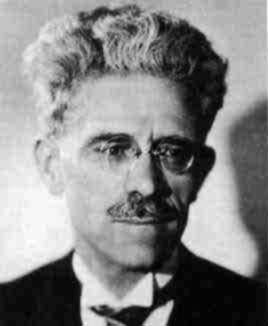- About MAA
- Membership
- MAA Publications
- Periodicals
- Blogs
- MAA Book Series
- MAA Press (an imprint of the AMS)
- MAA Notes
- MAA Reviews
- Mathematical Communication
- Information for Libraries
- Author Resources
- Advertise with MAA
- Meetings
- Competitions
- Programs
- Communities
- MAA Sections
- SIGMAA
- MAA Connect
- Students
- MAA Awards
- Awards Booklets
- Writing Awards
- Teaching Awards
- Service Awards
- Research Awards
- Lecture Awards
- Putnam Competition Individual and Team Winners
- D. E. Shaw Group AMC 8 Awards & Certificates
- Maryam Mirzakhani AMC 10 A Awards & Certificates
- Two Sigma AMC 10 B Awards & Certificates
- Jane Street AMC 12 A Awards & Certificates
- Akamai AMC 12 B Awards & Certificates
- High School Teachers
- News
You are here
A Compact Introduction to a Generalized Extreme Value Theorem: A Mini-Primary Source Project for Topology Students
Compactness is one of the trickiest concepts in the standard undergraduate mathematics curriculum. The definition is fairly succinct: the set X is compact if every open cover of X has a finite subcover. Yet this definition is often confusing for students to work with. If students are told a set is compact, they might assume they have been given some kind of finite cover of the set. Or if they need to show a set is compact, they may show that a particular infinite cover can be reduced to a finite subcover. Equivalent definitions, such as sequential compactness or satisfying the finite intersection property, only cause more confusion. On top of all of this, it isn’t clear to the student what property compactness is “catching” or why this property is desirable. The hope of the mini-Primary Source Project (PSP) A Compact Introduction to a Generalized Extreme Value Theorem is to introduce compactness in a short yet understandable way by following some of the work in a 1904 paper by Maurice Fréchet (1878–1973).
|
Why would anyone consider every possible open cover in the first place, and what is desirable about reducing it to a finite one? The initial motivation is a simple, yet important question to address. It is stated succinctly by Fréchet in the very first quotation in the project: We know how important it will be, in a great number of problems, to know if a quantity U which depends on some elements (points, functions, etc.) actually attains a minimum on the domain of consideration. In this quotation, the student will recognize the beginnings of the Extreme Value Theorem (EVT) from calculus. The student may even remember that EVT works only if the function is defined on a closed and bounded set of the real line. But as this project will show, it isn’t so much the fact that the set is “closed and bounded” that guarantees the existence of a minimum, as much as it is the fact that the set is compact. |
|
Maurice Fréchet (1878–1973). |
The project follows Fréchet’s development of compactness and ultimately his proof of a generalized extreme value theorem. As mentioned above, compactness turns out to be the key (and quite natural) property that makes the extreme value theorem possible. The project attempts to tease out these subtleties in a variety of ways. The compactness hypothesis for the extreme value theorem is shown to be necessary in Task 4, and it is further investigated in Task 9. The hope is that, once connections are made, students will gain a better understanding of compactness, perhaps even viewing it in a more natural light.
The complete project A Compact Introduction to a Generalized Extreme Value Theorem (pdf) is ready for student use and the LaTeX source is available from the author by request. Instructor notes are provided to explain the purpose of the project and guide the instructor through implementation of the project.
The project in this article marks the thirty-second entry in A Series of Mini-projects from TRIUMPHS: TRansforming Instruction in Undergraduate Mathematics via Primary Historical Sources appearing in Convergence, for use in courses ranging from first-year calculus to analysis, number theory to topology, and more. Links to other mini-PSPs in the series, including 4 additional projects for use in introductory topology courses, appear below. The full TRIUMPHS collection also offers one additional mini-PSP and two more extensive “full-length” PSPs for use in teaching topology.
Acknowledgments
The development of the student projects presented in this article has been partially supported by the TRansforming Instruction in Undergraduate Mathematics via Primary Historical Sources (TRIUMPHS) project with funding from the National Science Foundation’s Improving Undergraduate STEM Education Program under Grants No. 1523494, 1523561, 1523747, 1523753, 1523898, 1524065, and 1524098. Any opinions, findings, and conclusions or recommendations expressed in this project are those of the author and do not necessarily reflect the views of the National Science Foundation.
References
Fréchet, Maurice. 1904. Génèralisation d’un théorème de Weierstrass (Generalization of a theorem from Weierstrass). Comptes Rendus de l’Acadèmie des Sciences 139:848–850.
Nicholas A. Scoville (Ursinus College) , "A Compact Introduction to a Generalized Extreme Value Theorem: A Mini-Primary Source Project for Topology Students," Convergence (July 2024)





